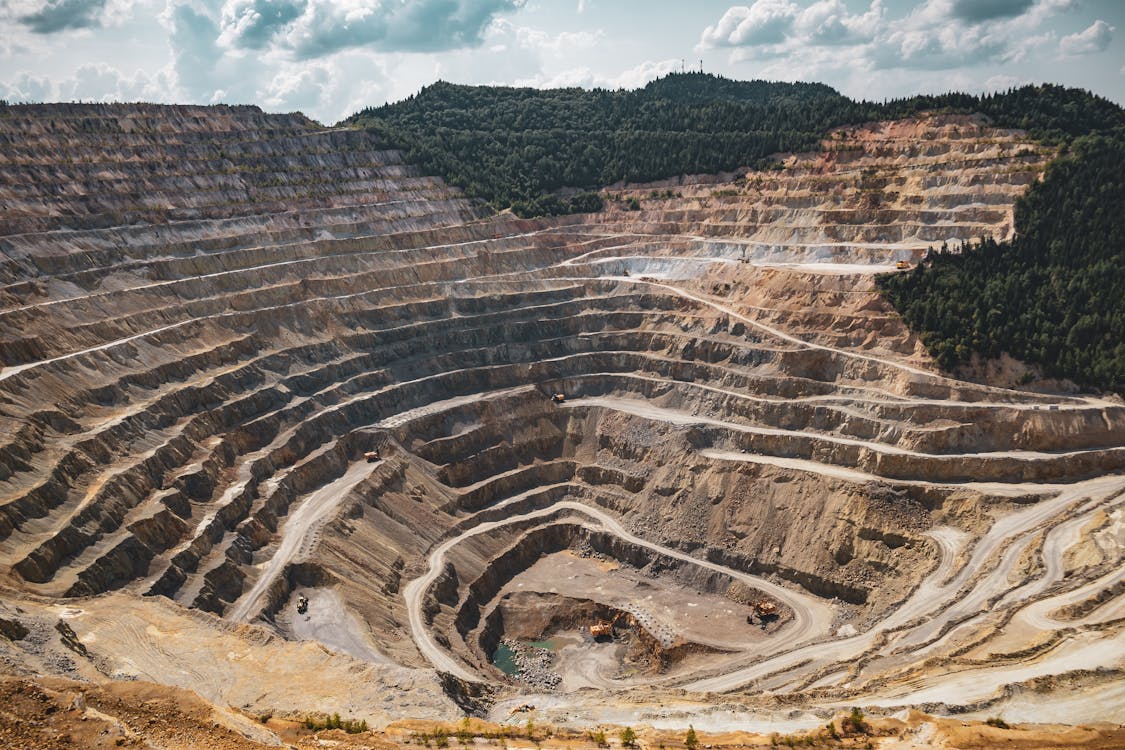Raw materials
What are raw materials e.g. toormed?
Raw materials are natural materials used to make products. It can be solid, liquid or gaseous. Raw materials are found in nature and have not yet been processed or modified.
Some examples of raw materials:
- Food: Wheat, maize, soya beans, animal feed, sugar, coffee and cocoa.
- Energy goods: Oil, natural gas, coal, electricity and heating oil.
- Metals: Gold, silver, platinum and copper.
- Agricultural products: Wood, cotton and rubber.
In the context of investing in raw materials:
In the context of investing, a commodity is an asset that can be bought and sold like shares or bonds. Commodity investing offers investors an opportunity:
- Diversify your portfolio: Adding commodities to your portfolio can help diversify it and reduce the impact of fluctuations in equity and bond markets.
- Inflation hedge: Some commodities, such as precious metals, can act as inflation hedges as their value tends to rise during inflation.
- Production: Commodity prices can rise over time, potentially offering investors higher returns.
In this article you will find answers to the questions:
What is a toormed?
What are the sub-categories of raw materials?
How to make money from raw materials?
What are the risks associated with raw materials?
Articles from
What are the sub-categories of raw materials?
As mentioned above, commodities are usually divided into four main categories in the investment context. These can be further subdivided into several sub-categories:
Food
- Teravili: Wheat, maize, rice, barley and rye.
- Oil plants: Soya beans, rapeseed and sunflower seeds.
- Sugar and desserts: Sugar, cocoa, coffee and sweeteners.
- Meat: Animal feed and meat products.
Energy goods
- Petroleum products: Crude oil, petrol, diesel and heating oil.
- Natural gas: Liquid gas.
- Electricity: Energy produced by different methods, such as fossil fuels, hydroelectricity and renewables.
Metals
- Precious metals: Gold, silver, platinum and palladium. They are renowned for their durability and suitability for investment.
- Base metals: Copper, nickel, aluminium and lead. They are widely used in manufacturing.
- Industrial metals: Lithium, cobalt and graphite. They are increasingly required in the manufacture of products such as batteries.
By investing in a specific commodity sub-category, you can focus on a particular sector or market. For example, if you believe in the growth of electric cars, you may be interested in investing in lithium, which is used in the production of batteries.
It is important to remember:
- Each category has its own risks and returns.
- Research a specific raw material thoroughly before investing.
- Diversify your portfolio into different commodities to reduce risks.

How to make money from raw materials?
There are many ways to make money from commodities, whether they are physical goods or derivatives. Here are 4 main strategies:
1. Direct marketing
- Buying physical goods, such as gold or oil.
- Selling the goods at a future profit.
Example: You buy 10 kg of gold and keep it in a safe. After a few years, when the price of gold has risen, you sell it for a profit.
2. Derivatives trading:
- Buying futures or options contracts that give you the right to buy or sell a commodity in the future at a fixed price.
Example: You buy an oil futures contract that gives you the right to buy 100 barrels of oil in 6 months at a price of 50 dollars per barrel. If the price of oil has risen to $60 a barrel in 6 months' time, you can sell the contract and earn a profit of $10 a barrel.
3. Investing in shares:
- Buying shares in companies involved in mining, manufacturing or trading.
- Get a return in dividends and share price increases.
Example: You buy shares in a mining company that produces gold. When the price of gold goes up, the price of the company's shares goes up and you make a profit.
4. Investment funds:
- By investing in funds that invest in raw materials.
- Letting a professional fund manager manage your money.
- You can diversify your investments into different goods.
Example: You invest in a commodity ETF, which invests in various metals, energy and agricultural commodities. This gives you broad exposure to the commodities market and reduces risk.

Earning from raw materials is important:
- Commodity markets are extremely volatile.
- Do your research before investing research.
- Understand the risks and potential returns associated with each strategy.
- Diversify your investments to reduce risks.
In addition to the above:
- Follow market trends and news.
- Use risk management strategies such as stop-loss orders.
- Consult a financial adviser for personalised investment advice.
- Earning from raw materials is possible, but it requires knowledge, experience and a willingness to take risks. Before investing, it is important to consider all the factors and make an informed decision.
Risks of investing in raw materials: it's important to be aware
Volatility
Commodity prices are highly volatile, which means they can rise and fall quickly and sharply. This makes investing in commodities risky and difficult to predict outcomes.
Geopolitical risks
Geopolitical events such as wars, sanctions and political uncertainties can have a significant impact on commodity prices.
Maintenance costs
Owning physical goods entails storage, insurance and transport costs. These costs can reduce the return on your investment.
Market manipulation
Commodity markets are at greater risk of manipulation because they are less regulated than stock markets. This can lead to artificially high or low prices and harm investors.
Fluctuations in supply and demand
Demand and supply on raw material markets can change rapidly, which affects prices. For example, bad weather can reduce crop yields and raise food prices.
Environmental impact
The production and consumption of some goods, such as fossil fuels, can have a negative impact on the environment.
In addition to the above
- Investing always comes with risks, including for raw materials.
- Before investing, do thorough research and understand all the risks.
- Diversify your investments to reduce risks.
- Don't invest money you can't afford to lose.
- Consult a financial adviser for personalised investment advice.
Commodity investing may suit investors who:
- Willing to tolerate some risk.
- Understand how raw materials markets work.
- Willing to devote time to research and analysis.
- Seeks opportunities to diversify its portfolio.
It is important to remember that commodity investing is not a get-rich-quick scheme. It is a long-term investment strategy that requires patience and discipline.
Trading in commodities can be a profitable venture, but it requires thought and preparation. Do your research, understand the risks and start small. Don't hesitate to seek help from a financial advisor to determine whether commodities investing fits your investment goals and risk tolerance.
Trading commodities is a complex subject and this article is not intended as a guide. It is important to do your own research and consult a financial adviser before investing.
-
What is Euribor and 3 ways it affects you and the whole European economy
-
Property flipping. How to ensure success? 4 aspects and risks
-
Tesla. The most famous stocks, part 2
-
Rating agencies and their role and power: how the 3 agencies (Moody's, S&P, Fitch) work, their impact on financial markets and related controversies
-
Reserve Currency and Cover Currency: 5 facts every investor should know
-
Types of income, Part 2. Active income






